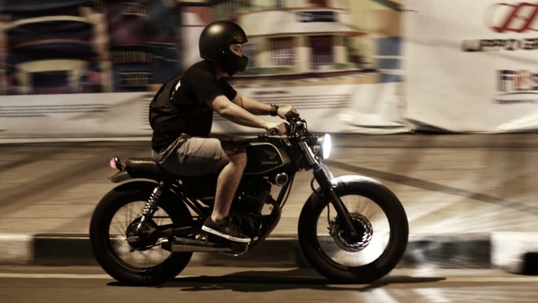Every avid motorcyclist has to begin somewhere. Even the person with the coolest ride in town was just a beginning once, and they were surely making beginner mistakes like everyone else. While it is, of course, fine to make a beginner mistake when you first start riding a motorcycle, it can be a bit of a concern when some of those mistakes can put you or others in danger.
Check out these 10 really common beginner motorcycle riding mistakes and how to avoid them:
- Stalling: Probably the most common beginner motorcyclist mistake on this list is stalling. If you use the clutch incorrectly at the wrong times, then your motorcycle can stall. Thankfully, the solution is easy – more practice rides. By practicing your clutch control in different riding conditions and in an empty party lot, you should solve the stalling problem soon.
- Forgetting to use or turn off indicators: Forgetting to use the blinker is a common mistake among all motorists, but it seems to be more common among new motorcyclists because they aren’t familiar with the turn indicators on that type of vehicle. Be mindful of when you are using your indicator, though. Other motorists need to know when you intend to leave a lane or make a turn to keep the roads as safe as can be.
- Dropping your ride: When you are steering left or right at a low speed, you might make the mistake of dropping your ride, which basically means you slow down so much that your ride just falls over because you’ve lost too much momentum. Again, practice makes perfect. Find an empty parking lot to practice slow-speed turns and maneuvers that require extra balance control.
- Wobbly counter-steering: To turn left or right on a motorcycle, you need to “counter-steer.” For example, to turn right, you have to press forward on the right handlebar. This action is counterintuitive to many people, so it is a challenge for new riders. As new riders learn the ropes, they tend to steer or counter-steer in wobbly, unsteady motions, which could lead to a motorcycle accident. Please practice your steering in a controlled, safe environment to beat this bad habit quickly.
- Speeding: You might have gotten used to how quickly an average car accelerates, or how it feels to travel at a certain speed while in a car. But acceleration rates and the feeling of certain speeds will feel different on a motorcycle due to the vehicle’s different size, weight, and design. Many new riders accidentally break the speed limit because they do not realize they are going as fast as they really are. Always pay attention to your speedometer, especially while you are learning to ride your new motorcycle.
- Tailgating: Judging distances on a motorcycle will initially be tricky, too. This can be a problem if it means you inadvertently tailgate other motorists. Pay attention to how closely you follow other motorists while in motion. At intersections, be mindful of where you come to a complete stop behind other vehicles, too.
- Entering busy traffic or highways: As a new motorcyclist, you should only ride in traffic conditions that you are comfortable with if you want to reduce your risk of a crash. Choose routes that keep you out of dense traffic or off highways while you are learning. Save these challenges for a few weeks or months from now when you are more comfortable with your abilities.
- Tunnel vision: Also called target fixation, tunnel vision can occur when a motorcyclist is too fixated on the path ahead. Specifically, many riders learn to “look where they want to go,” so they stare right at a certain spot on the road ahead but lose sight of everything around them. To be a safe motorcyclist, you need to be aware of your full surroundings and traffic conditions.
- Wearing the wrong helmet: You should always wear a motorcycle helmet while riding. But not all helmets are the same. To be specific, you should find a comfortably fitting motorcycle helmet that has been rated and approved by the U.S. Department of Transportation (DOT). Don’t be hesitant to shop around a bit until you find the right helmet for you. Protecting against head injuries is not something to rush.
- Riding on empty: A typical automobile can keep driving for a surprisingly long time after the fuel gauge points towards the E (for Empty). The average motorcycle, though, cannot pull off this empty gas tank stunt. In fact, many motorcycles don’t even have fuel gauges. One of the bigger challenges you might face as a new motorcyclist is simply keeping track of your ride’s fuel and making sure it does not run out. Most riders learn how to gauge the fuel amount based on the sloshing sound the tank gives when the bike is given a little shake.
We hope this quick list of beginner motorcycle riding mistakes helps you stay safe and enjoy your new ride better! With practice and deliberate attention given to safety, you are sure to become an expert motorcyclist before you know it.

